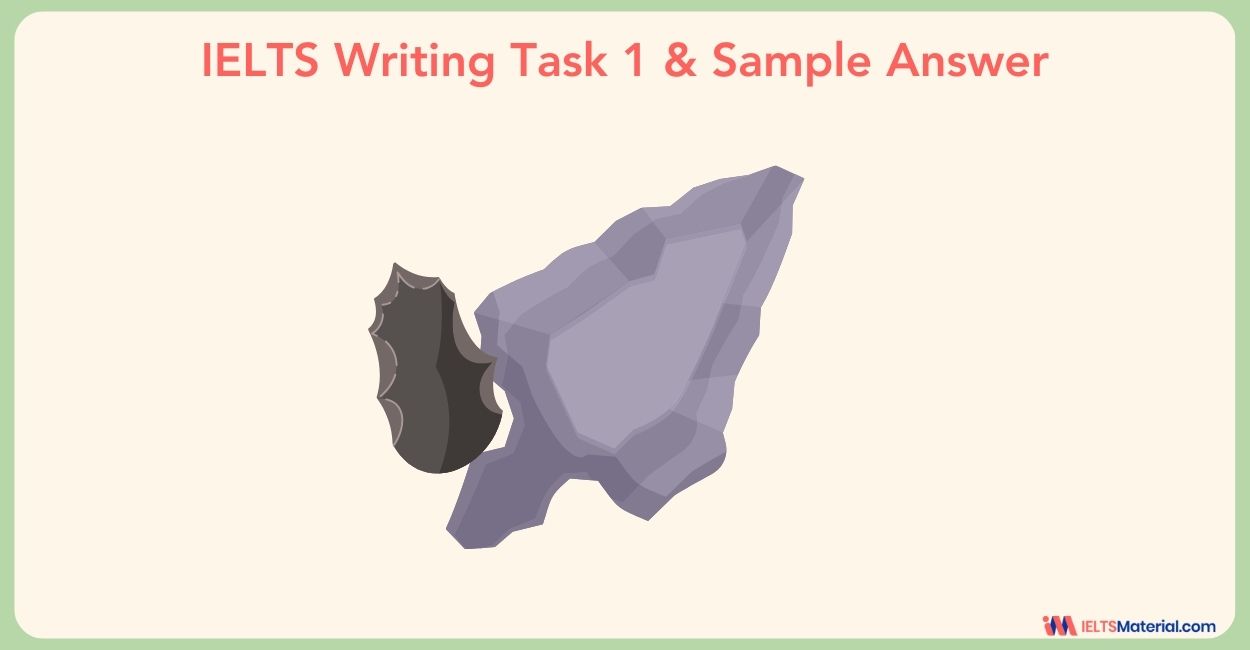The Maps Below Show the Village of Stokeford in 1930 and 2010 - IELTS Writing Task 1
7 min read
Updated On
-
Copy link
Examine the report plan & sample answers for the IELTS Academic Writing Task 1 map topic: The Maps Below Show the Village of Stokeford in 1930 and 2010. It will assist you in crafting your own Band 9 responses for similar IELTS Writing Task 1 questions.
Table of Contents
- Question for The Maps Below Show the Village of Stokeford in 1930 and 2010 - IELTS Writing Task 1
- Outline for IELTS Map Diagram - The Maps Below Show the Village of Stokeford in 1930 and 2010
- Sample Answers for The Maps Below Show the Village of Stokeford in 1930 and 2010 - IELTS Writing Task 1
- How to Answer The Maps Below Show the Village of Stokeford in 1930 and 2010 IELTS Writing Task 1?

Try AI Essay Checker for Instant Band Score
In the Writing Task 1 of IELTS Academic, you may be asked to describe maps that depict changes over time, like in the topic, ‘The Maps Below Show the Village of Stokeford in 1930 and 2010’. This type of question assesses the ability to compare, contrast, and summarize key transformations in a geographical location.
A well-structured answer for an IELTS Academic Writing Task 1 map diagram should include an introduction, an overview highlighting significant changes, and detailed comparisons in the body paragraphs. In this blog, you will find 3 such sample answers for the topic, The Maps Below Show the Village of Stokeford in 1930 and 2010, to help you prepare for similar tasks and achieve a higher writing band score.
Want to master IELTS Writing Task 1? Check out our comprehensive guide to understand the structure and boost your IELTS writing skills!
Question for The Maps Below Show the Village of Stokeford in 1930 and 2010 - IELTS Writing Task 1
You should spend about 20 minutes on this task.
The maps below show the village of Stokeford in 1930 and 2010. Summarise the information by selecting and reporting the main features, and make comparisons where relevant.
Write at least 150 words.

Outline for IELTS Map Diagram - The Maps Below Show the Village of Stokeford in 1930 and 2010
|
Introduction
Overview
Main Body Paragraph 1
Main Body Paragraph 2
|
Sample Answers for The Maps Below Show the Village of Stokeford in 1930 and 2010 - IELTS Writing Task 1
Below are three IELTS Writing Task 1 sample answers on the topic, The Maps Below Show the Village of Stokeford in 1930 and 2010. They will help you write an answer for band score 9.
The Maps Below Show the Village of Stokeford in 1930 and 2010 - Sample Answer 1
The given maps show us the changes that have taken place in the village of Stokeford in 2010 compared to the locality in 1930.
There have been quite a few major changes in the outlook of the village over the years. It is also noticeable that there were more residential buildings in Stokeford in 2010 than in 1930.
A major part of the area of Stokeford was used for agriculture and farming in 1930. There were a few shops and a post office towards the northern end of the village, along with a bridge over River Stoke. There was also a primary school in the village and a large residential compound.
By 2010, the village had transformed into a residential area from an agricultural area. Most of the farming area and the market area were used to build houses. The primary school was also renovated into a larger building. The compound with a large house was transformed into a retirement house. However, the bridge and the post office were unchanged.
Register for an IELTS Expert Session today & gain expert advice to excel in IELTS Writing Task 1!
The Maps Below Show the Village of Stokeford in 1930 and 2010 - Sample Answer 2
The maps illustrate the structural changes and transformation of Stockford village between 1930 and 2010.
Overall, a brief comparison reveals that in 1930, Stockford was a small village with fewer houses and extensive farmland, but it experienced significant residential development over the following decades.
Stockford is situated east of the River Stoke, with a main road running parallel to the river. In both maps, a bridge in the far northeastern part of the village connects the road across the river. In 1930, the village featured a few houses on either side of the road, along with two shops and a post office on its western side. Additionally, an elementary school, a large garden, and a connecting road leading to the bridge were located on the eastern side. Two expansive farmlands were also prominent in the 1930 layout but later disappeared.
By 2010, the post office, bridge, and primary school remained, though the school building had been expanded. The shops, however, were removed, and much of the garden, including many trees, was cleared to make way for additional housing. A large house was converted into a retirement home with structural extensions. Furthermore, the number of houses increased significantly, occupying the areas previously designated as farmland and garden space.
Boost your IELTS Writing score with expert guidance—join our online webinar now!
The Maps Below Show the Village of Stokeford in 1930 and 2010 - Sample Answer 3
The given maps illustrate the transformation of the village of Stokeford between 1930 and 2010, highlighting significant structural and residential developments over the 80-year period.
Overall, Stokeford underwent a major shift from a predominantly agricultural settlement to a more residential area. The most notable changes include the disappearance of farmland, an increase in housing, and the expansion of certain facilities, while a few key structures, such as the post office and bridge, remained unchanged.
In 1930, a significant portion of Stokeford was occupied by farmland, primarily located on the eastern side of the village. A small number of houses were scattered along the main road, accompanied by a post office and a few shops near the northern end. Additionally, a primary school and a large private residence with an extensive garden were present. The village was connected by a bridge over the River Stoke to the west.
By 2010, the village had undergone considerable urban expansion. The farmland was completely replaced by numerous residential buildings, and the shops had been removed. The primary school was extended to accommodate a larger student population. Furthermore, the large private residence was converted into a retirement home, with additional buildings constructed within the compound. Despite these significant changes, the bridge and post office remained unaltered, preserving some aspects of the village's original layout.
Are you looking for expert advice?
Click the Evaluate to get a detailed review of your Academic Writing Task 1 answer!
How to Answer The Maps Below Show the Village of Stokeford in 1930 and 2010 IELTS Writing Task 1?
When describing map-based questions in IELTS Writing Task 1, you need to compare the two maps, highlighting key changes over time. Below are five writing techniques for the IELTS Writing section on how to answer this task effectively.
1Start with a Clear Introduction and Overview
-
Begin by paraphrasing the question statement in your introduction.
-
Mention what the maps illustrate and the time periods being compared.
-
Then, provide an overview by summarizing the main trends without going into specific details.
2 Focus on Major Changes, Not Every Small Detail
Instead of describing every single modification, highlight the most notable transformations. Typically, map-based questions involve changes in:
-
Land use (farmland, residential areas, commercial zones)
-
Infrastructure (roads, bridges, schools, hospitals, shops, etc.)
-
Population growth (increase in houses and buildings)
3 Use Appropriate Language for Describing Changes
Since you are describing transformations over time, use:
-
Passive voice for developments: "The farmland was converted into residential areas."
-
Comparative structures to show differences: "By 2010, the number of houses had increased significantly compared to 1930."
-
Prepositions for location: "The school, which was located in the center of the village, remained unchanged."
-
Time phrases to indicate change: "Over the 80-year period," "By 2010," "During this time."
Using a variety of sentence structures boosts your score for grammatical range and accuracy.
4 Organize Your Description Logically
Keeping a clear structure makes it easier for the examiner to follow your response. Divide your main body into two paragraphs:
-
Paragraph 1: Describe the 1930 map, focusing on the original layout (e.g., farmland, fewer houses, rural environment).
-
Paragraph 2: Describe the 2010 map, emphasizing how the village has changed (e.g., more houses, loss of green space, infrastructure improvements).
5 Compare and Contrast Effectively
To score well in coherence and cohesion in IELTS Writing, use a mix of comparison phrases to highlight differences:
-
Increase/decrease: "The number of houses increased significantly, while farmland decreased."
-
Remain unchanged: "The school and post office remained in their original locations."
-
Was replaced by: "Farmland was replaced by new residential developments."
-
Expansion: "The village expanded towards the north, with new housing areas being developed."
Avoid simply listing changes—always compare the two maps directly to show contrast.
To sum up, we hope you have understood how to write an analytical paragraph in 100- 120 words by selecting and reporting the main features, and making comparisons where relevant on the topic, The Maps Below Show the Village of Stokeford in 1930 and 2010. Do not forget to use IELTS Writing Task 1 map vocabulary and connectors to make your answer band 9 worthy.
Useful Links:
- The Maps Below Show an Industrial Area in the Town of Norbiton - IELTS Writing Task 1
- A School in 1985 and the School Now - IELTS Writing Task 1
- Map of the Centre of a Small Town Before and After - IELTS Writing Task 1
- 21+ Tips On How to Improve Your IELTS Writing Band Score
- IELTS Writing Answer Sheet
- IELTS Writing Task 1 Connectors
Practice IELTS Writing Task 1 based on report types

Start Preparing for IELTS: Get Your 10-Day Study Plan Today!
Explore other sample Map Diagrams
Recent Articles

Nehasri Ravishenbagam

Nehasri Ravishenbagam

Kasturika Samanta









Post your Comments
2 Comments